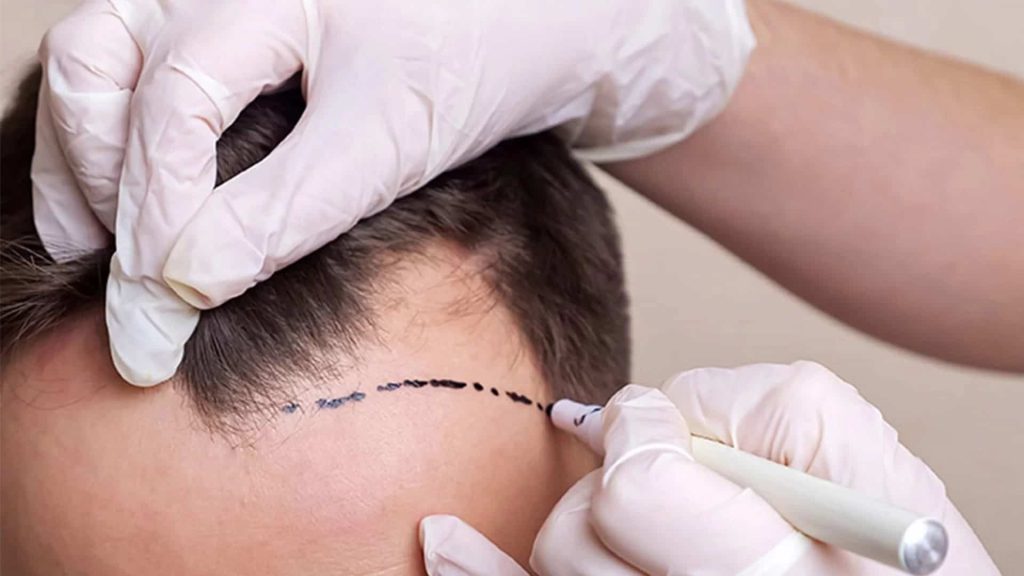تحقيق الجودة في الصحة والجمال!


In the pursuit of regaining a full head of hair, individuals often find themselves at a crossroads, wondering whether DHI or FUE hair transplant is the better option. Each method has its own set of advantages and considerations, and the decision you make can have a significant impact on the outcome. This comprehensive guide will walk you through the intricacies of DHI vs FUE hair transplant, helping you make an informed choice.
Hair loss is a common concern for many, and hair transplant procedures have emerged as a ray of hope for those seeking a permanent solution. When it comes to hair transplants, DHI and FUE are two popular techniques, each with its unique approach to restoring your hair. In this guide, we will explore the differences, benefits, and considerations associated with these methods, helping you make a well-informed decision for your hair restoration journey.
DHI (Direct Hair Implantation) and FUE (Follicular Unit Extraction) are both minimally invasive hair transplant techniques. The fundamental difference lies in the way hair follicles are extracted and implanted.
DHI involves a specialized pen-like device that extracts and implants hair follicles simultaneously, reducing the time they spend outside the body. This technique is known for its precision and minimal scarring.
FUE, on the other hand, requires individual extraction of hair follicles before implantation. It is less invasive and leaves tiny, nearly invisible scars, making it a popular choice.
DHI procedures tend to be slightly more expensive than FUE due to the specialized equipment and expertise required. Your budget may influence your choice.
If the idea of visible scarring concerns you, FUE is the better option. DHI leaves minimal scarring, but FUE is virtually scarless.
DHI often has a quicker recovery period, allowing you to return to your regular activities sooner. FUE may require a bit more downtime.
Consider your hair type and the area to be transplanted. FUE can be a better choice for body hair transplants.
The success of your hair transplant heavily depends on the surgeon’s skill and experience. Ensure you choose a reputable clinic with experienced surgeons.
Q: Is a hair transplant permanent? A: Yes, both DHI and FUE hair transplants offer a permanent solution to hair loss. The transplanted hair will continue to grow naturally.
Q: Do hair transplants look natural? A: When performed by skilled surgeons, both DHI and FUE hair transplants result in a natural appearance that is virtually indistinguishable from your existing hair.
Q: Will the transplanted hair require special care? A: No, the transplanted hair can be treated like your natural hair. Regular washing, cutting, and styling are all possible.
**Q: How long does the procedure take? A: The duration of the procedure depends on the number of grafts needed, but it typically ranges from a few hours to a full day.
**Q: Is there any pain or discomfort during the procedure? A: Both DHI and FUE hair transplants are performed under local anesthesia, minimizing pain and discomfort during the procedure.
**Q: Can women undergo DHI or FUE hair transplants? A: Absolutely, both techniques are suitable for women experiencing hair loss.
The choice between DHI and FUE hair transplant ultimately depends on your specific needs, preferences, and budget. Both methods offer effective and permanent solutions to hair loss, and your decision should be based on a thorough understanding of the differences and considerations outlined in this guide. To ensure the best results, choose a reputable clinic with experienced surgeons who can help you achieve your hair restoration goals.
When considering a hair transplant, it’s crucial to remember that individual results may vary. Consult with a qualified professional to determine the best approach for your unique situation. Your journey to a full head of hair begins with the right choice.
What is PRP Hair Treatment? - Aesthecenter Find Best Clinic for You
October 30, 2023 at 3:55 pm[…] might be the answer you’ve been searching for. In this article, we will delve into what PRP hair treatment is, how it works, its benefits, and frequently asked questions. So, let’s get started on the […]